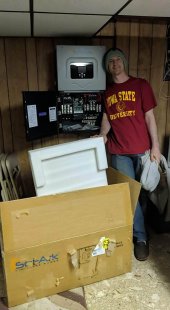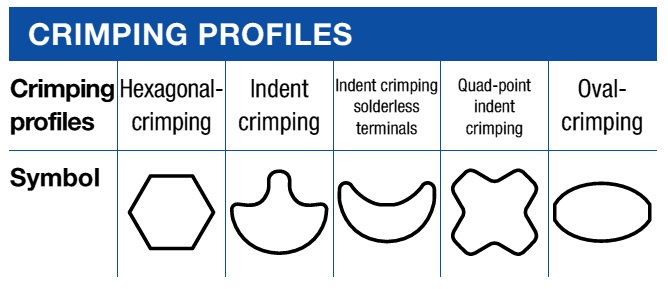byteharmony
Sunny side up please.
Here is the process I'm considering for connecting the wires to the lugs:
Background:
I had fun this morning testing lugs with the Sol Ark 15k now beautifully mounted on my basement wall.

I have 2 very large spools of 10 AWG THHN for my solar job (a gift, thanks Dad).
I'm going to have a VERY large network of DIY 18650 cells.
Thinking about using two 10 AWG wires in a single 8 AWG 5/16" lug. Lugs back to back against the sol ark battery terminal, then spaced by a copper 3/8 pipe that is cut to allow enough room for another back to back lug set before the nut.
With this setup I expect the following power calcs:
Total 10 AWG wires per battery terminal: 8
at 30 AMPS / 10 AWG wire, total current: 240 A
total terminals per each polarity: 2
Max current: 480 A
Sol Ark limit 375 A
# of wires that could fail without going over 30 A per wire: 3.5 wires
Reduce current to increase safe failure risk and reduce load on Sol Ark
Increase wire failure to 4, 2 failures per set of wire on each terminal: 4*30 = 120 A
480 A - 120 A = 360 A (96% of max charging power able to be delivered by the Sol Ark 15k)
360 A / 16 wires = 22.5 A / 10 AWG wire
I'm also planning on using a Trophy 48V100E-1 in my lawn tractor that will be connected with a different set of wiring to control voltage over a large distance.
Looking forward to summer everyone!
Will be using the Trophy exclusively at least until the first 18650 DIY is ready.
design for each 18650 battery
280 cells, 14s, BD6A17S6P JKBMS, 30 AMP Class T fuse
FYI, yes I know the top clearance does not meet with Sol Ark spec... this will be addressed before the Sol Ark is turned on.
- Put a lug in hydraulic crimper
- Strip and insert 2 tinned 10 AWG stranded THHN wires into a tinned lug
- solder wires to the lug - torch?
- immediately crimp the wires after removing heat
- release crimper and allow everything to cool
- slide on shrink wrap and shrink with heat gun.
Background:
I had fun this morning testing lugs with the Sol Ark 15k now beautifully mounted on my basement wall.

I have 2 very large spools of 10 AWG THHN for my solar job (a gift, thanks Dad).
I'm going to have a VERY large network of DIY 18650 cells.
Thinking about using two 10 AWG wires in a single 8 AWG 5/16" lug. Lugs back to back against the sol ark battery terminal, then spaced by a copper 3/8 pipe that is cut to allow enough room for another back to back lug set before the nut.
With this setup I expect the following power calcs:
Total 10 AWG wires per battery terminal: 8
at 30 AMPS / 10 AWG wire, total current: 240 A
total terminals per each polarity: 2
Max current: 480 A
Sol Ark limit 375 A
# of wires that could fail without going over 30 A per wire: 3.5 wires
Reduce current to increase safe failure risk and reduce load on Sol Ark
Increase wire failure to 4, 2 failures per set of wire on each terminal: 4*30 = 120 A
480 A - 120 A = 360 A (96% of max charging power able to be delivered by the Sol Ark 15k)
360 A / 16 wires = 22.5 A / 10 AWG wire
I'm also planning on using a Trophy 48V100E-1 in my lawn tractor that will be connected with a different set of wiring to control voltage over a large distance.
Looking forward to summer everyone!
Will be using the Trophy exclusively at least until the first 18650 DIY is ready.
design for each 18650 battery
280 cells, 14s, BD6A17S6P JKBMS, 30 AMP Class T fuse
FYI, yes I know the top clearance does not meet with Sol Ark spec... this will be addressed before the Sol Ark is turned on.





